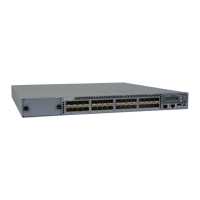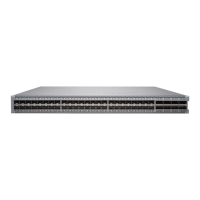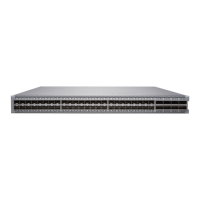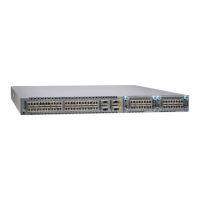WARNING: Ensure that the power cables do not block access to switch
components or drape where people can trip on them.
5. Connect the power supplies to the power sources. Secure power source cables to the
power supplies by screwing the ring lugs attached to the cables to the appropriate
terminals by using the screw from the terminals (see Figure 45 on page 155).
•
To connect a power supply to a power source:
a. Leave the jumpers on the power supply terminals in place.
b. Secure the ring lug of the positive (+) DC power source cable to the A+ or B+
terminal on the DC power supply.
c. Secure the ring lug of the negative (–) DC power source cable to the A– or B–
terminal on the DC power supply.
d. Tighten the screws on the power supply terminals until snug using the screwdriver.
Do not overtighten—apply between 8 lb-in. (0.9 Nm) and 9 lb-in. (1.02 Nm) of
torque to the screws.
If you have a second installed power supply, connect it in the same way you did the
first.
•
To connect one power supply to two power sources:
a. Remove the jumpers on the power supply terminal block.
b. Secure the ring lug of the positive (+) DC power source cable from the first DC
power source to the A+ terminal on the first DC power supply.
c. Secure the ring lug of the negative (–) DC power source cable from the first DC
power source to the A– terminal on the first DC power supply.
d. Secure the ring lug of the positive (+) DC power source cable from the second
DC power source to the A+ terminal on the second DC power supply.
e. Secure the ring lug of the negative (–) DC power source cable from the second
DC power source to the A– terminal on the second DC power supply.
f. Tighten the screws on the power supply terminals on both the power supplies
until snug using the screwdriver. Do not overtighten—apply between 8 lb-in.
(0.9 Nm) and 9 lb-in. (1.02 Nm) of torque to the screws.
Copyright © 2017, Juniper Networks, Inc.154
EX4200 Switch Hardware Guide

